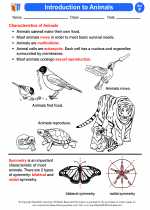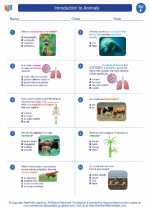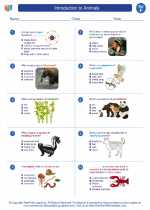Organelles
Organelles are specialized structures within a cell that perform specific functions necessary for the cell to survive, grow, and reproduce.
Types of Organelles
- Nucleus: Control center of the cell, contains genetic material (DNA).
- Cell Membrane: Outer boundary of the cell, controls what enters and exits the cell.
- Cytoplasm: Gel-like substance that fills the cell, where organelles are suspended.
- Endoplasmic Reticulum (ER): Network of membranes involved in protein and lipid synthesis.
- Ribosomes: Site of protein synthesis, found on the ER or floating in the cytoplasm.
- Golgi Apparatus: Modifies, sorts, and packages proteins for transport.
- Mitochondria: Powerhouse of the cell, generates energy (ATP) through cellular respiration.
- Chloroplasts (in plant cells): Site of photosynthesis, converts light energy into chemical energy.
- Vacuoles: Storage sacs for water, nutrients, and waste products.
- Lysosomes: Digestive organelles that break down waste materials and cellular debris.
- Cytoskeleton: Network of protein filaments that provides structure and support for the cell.
Functions of Organelles
Each organelle has specific functions that contribute to the overall survival and functioning of the cell.
- The nucleus contains the cell's genetic material and controls the cell's activities.
- The cell membrane regulates the movement of substances into and out of the cell.
- The endoplasmic reticulum is involved in protein and lipid synthesis.
- Ribosomes are responsible for protein synthesis.
- The Golgi apparatus modifies, sorts, and packages proteins for transport.
- Mitochondria generate energy for the cell through cellular respiration.
- Chloroplasts (in plant cells) convert light energy into chemical energy through photosynthesis.
- Vacuoles store water, nutrients, and waste products.
- Lysosomes break down waste materials and cellular debris.
- The cytoskeleton provides structure and support for the cell.
Study Guide
Here are some key points to remember when studying organelles:
- Memorize the names and functions of the organelles.
- Understand the differences between animal and plant cell organelles (e.g., chloroplasts are present only in plant cells).
- Be able to identify organelles in a diagram of a cell.
- Understand the importance of each organelle in maintaining the cell's survival and function.
- Review the processes associated with specific organelles, such as photosynthesis in chloroplasts and protein synthesis in ribosomes.
Understanding organelles is essential for comprehending the basic workings of a cell and how living organisms function at the microscopic level.
.◂Science Worksheets and Study Guides Sixth Grade. Introduction to Animals
Study Guide Introduction to Animals
Introduction to Animals  Activity Lesson
Activity Lesson Introduction to Animals
Introduction to Animals  Worksheet/Answer key
Worksheet/Answer key Introduction to Animals
Introduction to Animals  Worksheet/Answer key
Worksheet/Answer key Introduction to Animals
Introduction to Animals  Worksheet/Answer key
Worksheet/Answer key Introduction to Animals
Introduction to Animals  Vocabulary/Answer key
Vocabulary/Answer key Introduction to Animals
Introduction to Animals  Vocabulary/Answer key
Vocabulary/Answer key Introduction to Animals
Introduction to Animals  Vocabulary/Answer key
Vocabulary/Answer key Introduction to Animals
Introduction to Animals  Vocabulary/Answer key
Vocabulary/Answer key Introduction to Animals
Introduction to Animals 

 Activity Lesson
Activity Lesson
 Worksheet/Answer key
Worksheet/Answer key
 Worksheet/Answer key
Worksheet/Answer key
 Worksheet/Answer key
Worksheet/Answer key
 Vocabulary/Answer key
Vocabulary/Answer key
 Vocabulary/Answer key
Vocabulary/Answer key
 Vocabulary/Answer key
Vocabulary/Answer key
 Vocabulary/Answer key
Vocabulary/Answer key

The resources above cover the following skills:
LIFE SCIENCE
From Molecules to Organisms: Structures and Processes